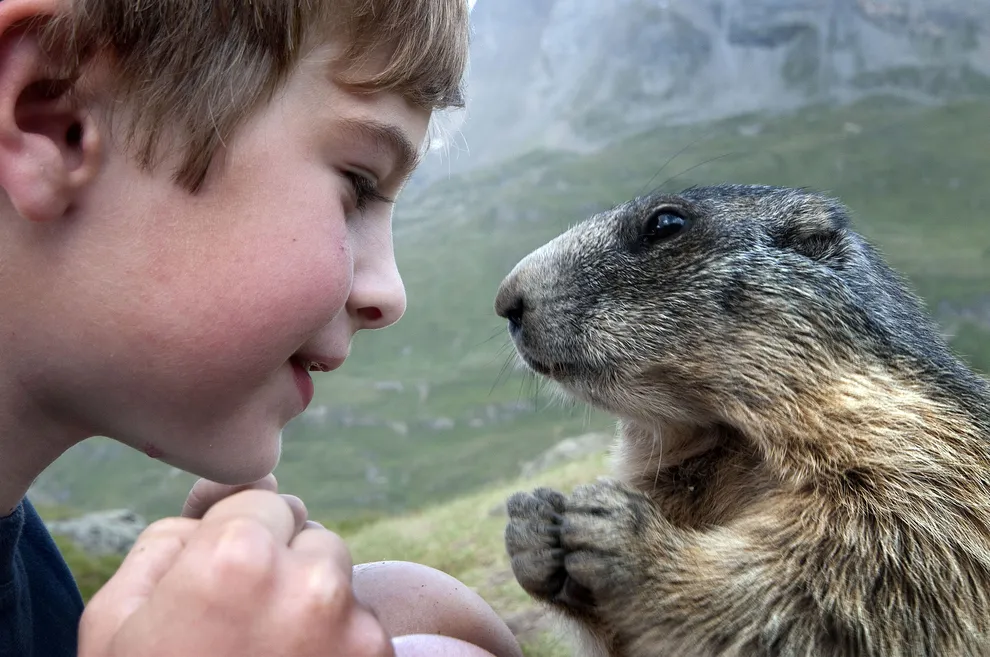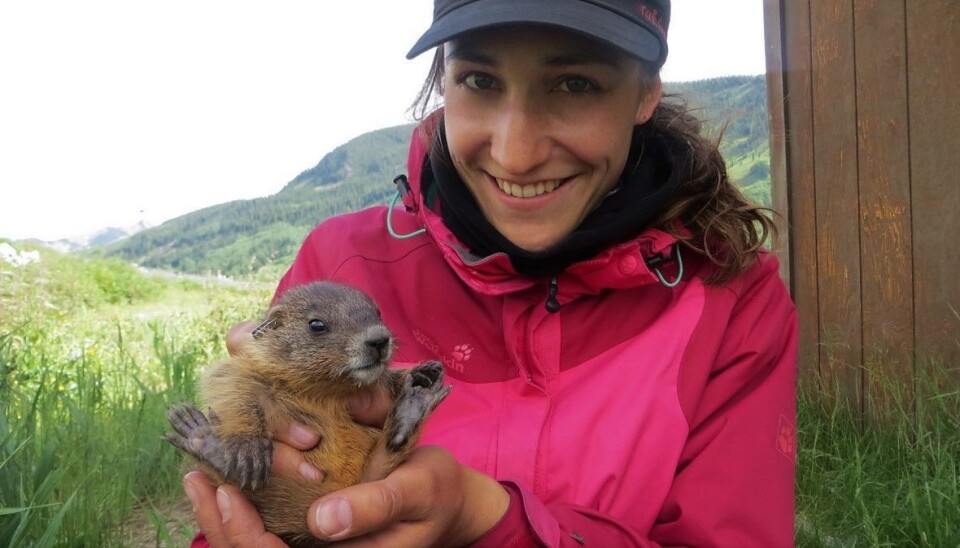Marmot as a Pets
A. Definition of a Marmot – A marmot is a type of rodent belonging to the Sciuridae family, commonly found in mountainous regions of Eurasia and North America. They are known for their stout bodies, short legs, and characteristic fur patterns. B. Growing Interest in Marmots as Pets – In recent years, there has been a noticeable increase in interest among pet enthusiasts regarding marmots as potential companions. This growing fascination can be attributed to their unique appearance and reportedly affectionate nature. C. Purpose of the Article – The purpose of this article is to provide comprehensive information for individuals considering the adoption of a marmot as a pet. By exploring the characteristics, care requirements, and ethical considerations associated with marmot ownership, this article aims to equip readers with the knowledge necessary to make informed decisions regarding pet acquisition.
Understanding Marmots
A. Species and Varieties – Marmots belong to the Sciuridae family and are further categorized into various species and subspecies. Common species include the groundhog, yellow-bellied marmot, and hoary marmot, each with distinct characteristics and habitats. B. Natural Habitat and Behavior – Marmots are typically found in mountainous regions, preferring habitats with rocky terrain and grassy slopes. They are diurnal animals, meaning they are active during the day and spend much of their time foraging for food, sunbathing, and socializing with other marmots. C. Diet and Nutrition – Marmots are herbivores with a primarily vegetarian diet consisting of grasses, herbs, roots, and occasionally fruits and berries. They have specialized digestive systems adapted for processing plant material, requiring a diet rich in fiber and nutrients to maintain optimal health.
Pros and Cons of Keeping a Marmot as a Pet
A. Advantages 1. Affectionate Nature – Marmots are known for forming strong bonds with their human companions, often displaying affection through cuddling, grooming, and playful behavior. 2. Unique Appearance – With their distinctive features such as rounded bodies, bushy tails, and often striking fur patterns, marmots can be visually captivating and serve as conversation starters. 3. Intelligence and Trainability – Marmots are intelligent creatures capable of learning various tricks and commands through positive reinforcement training methods, making them engaging and interactive pets. B. Disadvantages 1. Specialized Care Requirements – Marmots have specific habitat and dietary needs, requiring a suitable enclosure with ample space for burrowing and climbing, as well as a carefully balanced diet consisting of fresh vegetation. 2. Legal and Ethical Considerations – Depending on local regulations, keeping marmots as pets may be subject to legal restrictions or permits due to concerns about wildlife conservation and animal welfare. 3. Potential Health Risks – Marmots may be susceptible to various health issues such as dental problems, obesity, and parasitic infections, necessitating regular veterinary check-ups and preventative care measures.
Considerations Before Getting a Marmot
A. Research and Education – Prospective marmot owners should thoroughly research the species’ natural behaviors, dietary needs, and habitat requirements to ensure they can provide appropriate care and enrichment for their pets. B. Legalities and Permits – It’s essential to familiarize oneself with local laws and regulations regarding the ownership of marmots as pets. Some jurisdictions may require permits or licenses, and certain species may be protected or prohibited. C. Financial Costs – Owning a marmot entails financial responsibilities, including initial setup costs for enclosure and supplies, as well as ongoing expenses for food, veterinary care, and potential unforeseen medical emergencies. D. Time and Space Requirements – Marmots need ample space to roam, dig, and engage in natural behaviors. Prospective owners should assess whether they have the necessary outdoor space and time to dedicate to their pet’s care, including daily feeding, cleaning, and social interaction.
Care and Maintenance of Pet Marmots
A. Housing and Enclosure – Marmots require spacious and secure outdoor enclosures with natural elements such as soil, rocks, and vegetation to mimic their natural habitat. The enclosure should also provide shelter from extreme weather conditions and predators. B. Diet and Feeding Schedule – A marmot’s diet should primarily consist of fresh grasses, leafy greens, vegetables, and occasional fruits. Feeding should be provided daily, with quantities adjusted based on the marmot’s size, age, and activity level. C. Enrichment and Mental Stimulation – To prevent boredom and promote mental well-being, marmots benefit from enrichment activities such as foraging puzzles, tunnels, and climbing structures. Interaction with their owners and supervised outdoor exploration can also provide mental stimulation. D. Veterinary Care and Health Monitoring – Regular veterinary check-ups are essential to monitor the marmot’s overall health and address any potential medical issues promptly. Vaccinations, parasite control, and dental care should be included in the pet’s healthcare regimen. Owners should also observe their marmot for signs of illness or injury and seek veterinary attention as needed.
Training and Socialization
A. Basic Training Techniques – Marmots can be trained using positive reinforcement methods such as clicker training and rewards like treats or praise. Basic commands like “come,” “stay,” and “crate” can be taught through consistent repetition and patience. B. Socialization with Humans and Other Pets – Early and consistent socialization with humans is crucial to ensure marmots become comfortable with handling and interaction. Introducing them to other household pets should be done gradually and supervised to prevent conflicts and stress. C. Potential Challenges and Solutions – Marmots may exhibit behaviors like digging, chewing, or aggression, which can pose challenges to owners. Providing appropriate outlets for natural behaviors, such as digging boxes and chewing toys, can help redirect these behaviors. Consistent training and positive reinforcement techniques can also address behavioral issues effectively.
Responsible Ownership and Ethical Considerations
A. Conservation Awareness – Owners should be mindful of the conservation status of marmot species and their impact on wild populations. Supporting conservation efforts through donations, volunteer work, or advocacy can help protect marmots and their habitats. B. Avoiding Wild-Caught Specimens – Acquiring marmots from reputable breeders or adoption centers is preferable to capturing wild specimens, which can disrupt natural ecosystems and contribute to population declines. Choosing captive-bred marmots also reduces the risk of introducing diseases or parasites to wild populations. C. Rehoming and Adoption Considerations – Before acquiring a marmot, prospective owners should consider their long-term commitment and potential life changes that may affect their ability to care for the pet. If rehoming becomes necessary, efforts should be made to find a suitable and responsible new home or placement through adoption agencies or rescue organizations.
Conclusion
A. Recap of the Benefits and Challenges of Marmot Ownership – Owning a marmot can be rewarding due to their affectionate nature, unique appearance, and intelligence. However, it also comes with challenges such as specialized care requirements, legal considerations, and potential health risks. B. Importance of Responsible Ownership Practices – Responsible ownership practices are essential for ensuring the welfare of pet marmots and the conservation of wild populations. This includes thorough research, adherence to legal regulations, providing proper care and enrichment, and supporting conservation efforts. C. Final Recommendations for Prospective Marmot Owners – Prospective marmot owners should carefully consider their ability to meet the needs of these unique animals before acquiring one as a pet. Conducting thorough research, seeking guidance from experienced owners or veterinarians, and fostering a commitment to responsible care practices are key to providing a fulfilling and enriching life for pet marmots.
Here are some frequently asked questions (FAQs) about marmots as pets:
- Are marmots legal to own as pets?
- The legality of owning a marmot as a pet varies depending on location. It’s essential to check local laws and regulations regarding wildlife ownership before considering a marmot as a pet.
- What type of enclosure do marmots need?
- Marmots require spacious outdoor enclosures with natural elements like soil, rocks, and vegetation to mimic their natural habitat. The enclosure should also provide shelter from extreme weather conditions and predators.
- What do marmots eat?
- Marmots are herbivores and primarily eat fresh grasses, leafy greens, vegetables, and occasionally fruits. It’s essential to provide a varied and balanced diet to ensure their nutritional needs are met.
- Do marmots make good pets?
- Marmots can make affectionate and interactive pets for those willing to meet their specific care requirements. However, they also come with challenges such as specialized care needs, legal considerations, and potential health risks.
- How do you train a pet marmot?
- Marmots can be trained using positive reinforcement techniques such as clicker training and rewards like treats or praise. Basic commands like “come,” “stay,” and “crate” can be taught through consistent repetition and patience.
- What are the potential health risks associated with owning a pet marmot?
- Marmots may be susceptible to various health issues such as dental problems, obesity, and parasitic infections. Regular veterinary check-ups and preventative care measures are essential to maintain their health.
- Can marmots be kept indoors as pets?
- While marmots are primarily outdoor animals, they can be kept indoors temporarily for socialization or during extreme weather conditions. However, they require ample outdoor space to roam, dig, and engage in natural behaviors for long-term health and well-being.
- Where can I find a pet marmot?
- It’s essential to acquire a pet marmot from reputable breeders or adoption centers to ensure they are healthy, captive-bred specimens. Avoid purchasing wild-caught marmots, as this can contribute to population declines and disrupt natural ecosystems.



